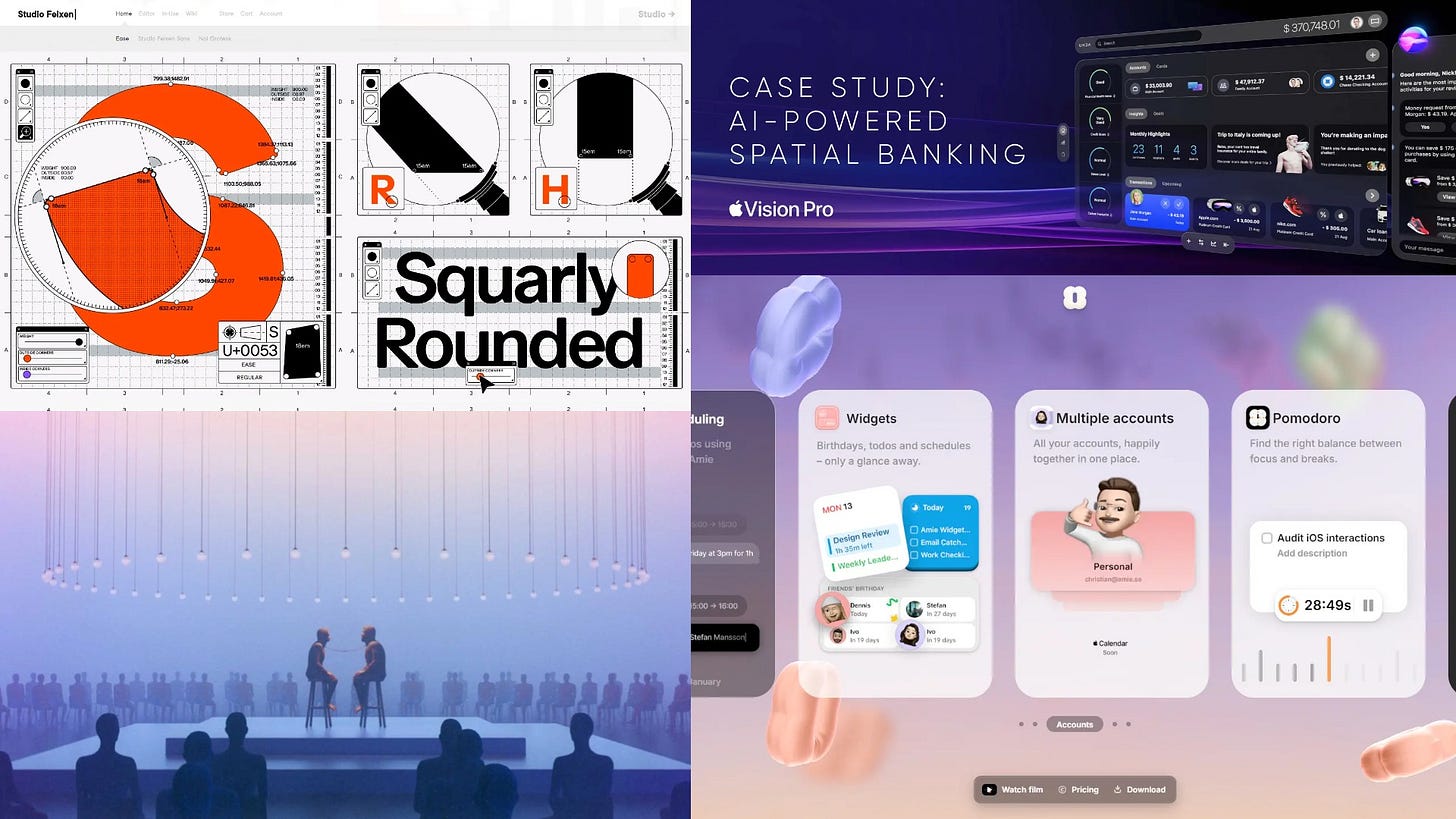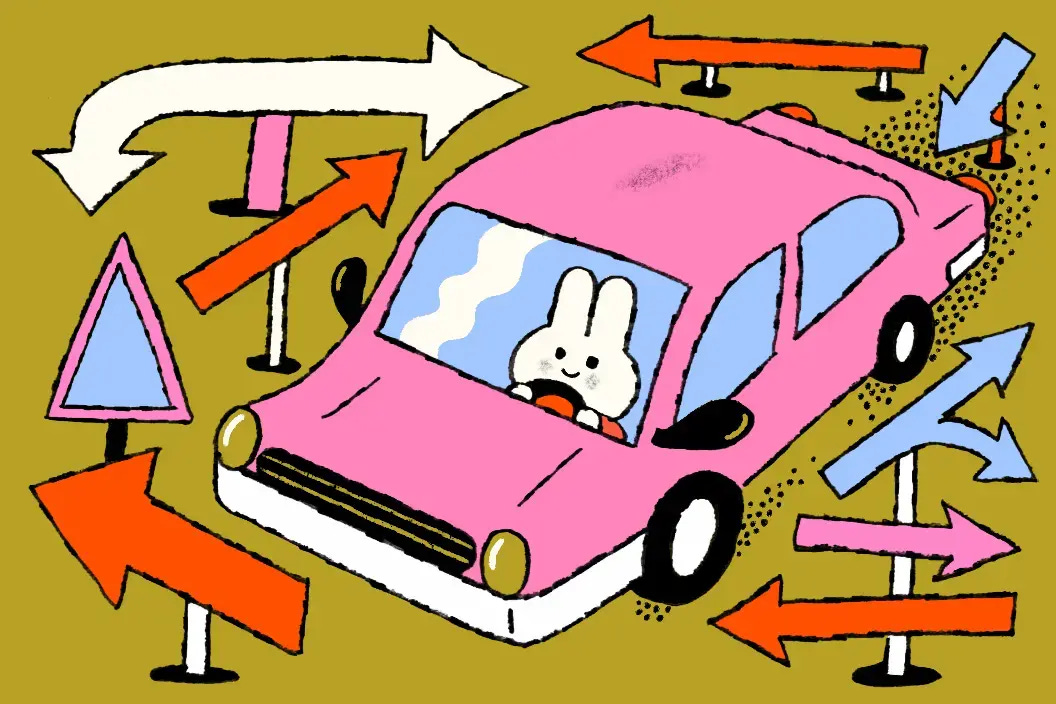Issue 84
Articulating spatial banking
Hello, dear readers! 👋
In this issue, among other things:
6 Approaches to Changing Career Paths
Why you shouldn't use AI-generated images
How to design an ethical cookie request
58 rules for creating an aesthetic and user-friendly interface design
How to design small badges for interfaces
Articulation barrier in the use of AI
Benedict Evans' annual presentation on changes in the world of technology
How to properly redesign the interface
…and much more!
Enjoy reading!
🗞 News and articles
The Art of the Professional Pivot
Aaron Britt from Figma wrote about 6 approaches to changing career paths. They are based on the personal experience of 6 creative specialists who not only shared their story, but also gave practical advice.
6 approaches:
The reframe— a look at the profession from a different angle thanks to the analysis, criticism and advice of mentors
The boomerang — dismissal from the company for additional training and subsequent placement back, but already in a new position
The unfolding — a natural career turnaround, the point of which is to honestly listen to your true interests
The stretch — a forced way out of the scope of responsibilities to gain new knowledge and skills
The hard left — a complete and decisive change of activity. It involves training and career development from scratch
The blend — the choice of the best strategy based on the analysis of many years and diverse experience
Article by Samhita Tankala from NNGroup, in which she explained how to design an ethical and user-friendly cookie request so that users have a clear and understandable choice.
The main thoughts from the article:
Requesting permission to use cookies is mandatory if you have users from countries where laws allow you to control the collection of information about yourself
Some laws require that consent to the use of data be active. That is, cookies, except for strictly necessary ones, cannot be used until a person agrees
Many people don't like the fact that their data is being collected, so companies need to find a balance between cookie personalization and ethical standards
Requests for the use of cookies annoyed all participants in the study
The request should be able to be customized with clear and understandable options. For example: "accept all", "only necessary", "configure" and "reject all". Lack of choice undermines the trust of the audience
You should not make "Accept everything" the main button, and hide the settings behind small text or on a separate page
The request must not contain dark patterns to obtain the user's consent. For example, overly accentuated "Accept all" buttons or double-negative selectors such as "Don't sell my data"
The "X" or "Close" button can be misleading, because it is not clear what it means: "Accept everything" or "Reject everything"
Do not block or block the content with a request, because users first want to know which site they got to and whether they need it
The Articulation Barrier: Prompt-Driven AI UX Hurts Usability
Jakob Nielsen argues that the low literacy rate of most people does not allow them to formulate complex and precise concepts for AI. Because of this, users cannot fully use the capabilities of neural networks.
As one of the possible solutions, he suggests creating hybrid interfaces where, in addition to text prompts, it will be possible to use a graphical interface with ready-made options for actions.
An article about how generated images began to replace content from stock photos and why such images should not actually be used.
What's wrong with AI images:
It is too easy to determine that the image was created by a neural network. People got used to such pictures, and they began to cause rejection
The AI uses overly saturated and contrasting colors that look like sweet candy. Such images scream that they are created by a neural network
People might think that if you use AI images to design articles, then maybe you use neural networks to write text as well
AI pictures lack the emotionality and details inherent in real photographs or human-made art
AI images often look surreal and creepy. This effect can negatively affect the overall impression of your users
AI often ignores ethical norms and copyrights. At an early stage, everyone liked the images created based on the works of famous artists, but today it is already a move
⚡️ Briefly
Vitaly Friedman has made a memo for the proper redesign of the interface. About when and how to redesign, how to avoid mistakes, and how to help users adopt a new design.
Design better badges. Learn badge user interface best. Andrew Coyle gave a number of tips on how to design small badges. They are usually used to show statuses, categories, tags, or notifications. He also shared the Figma source code with blanks of such badges.










